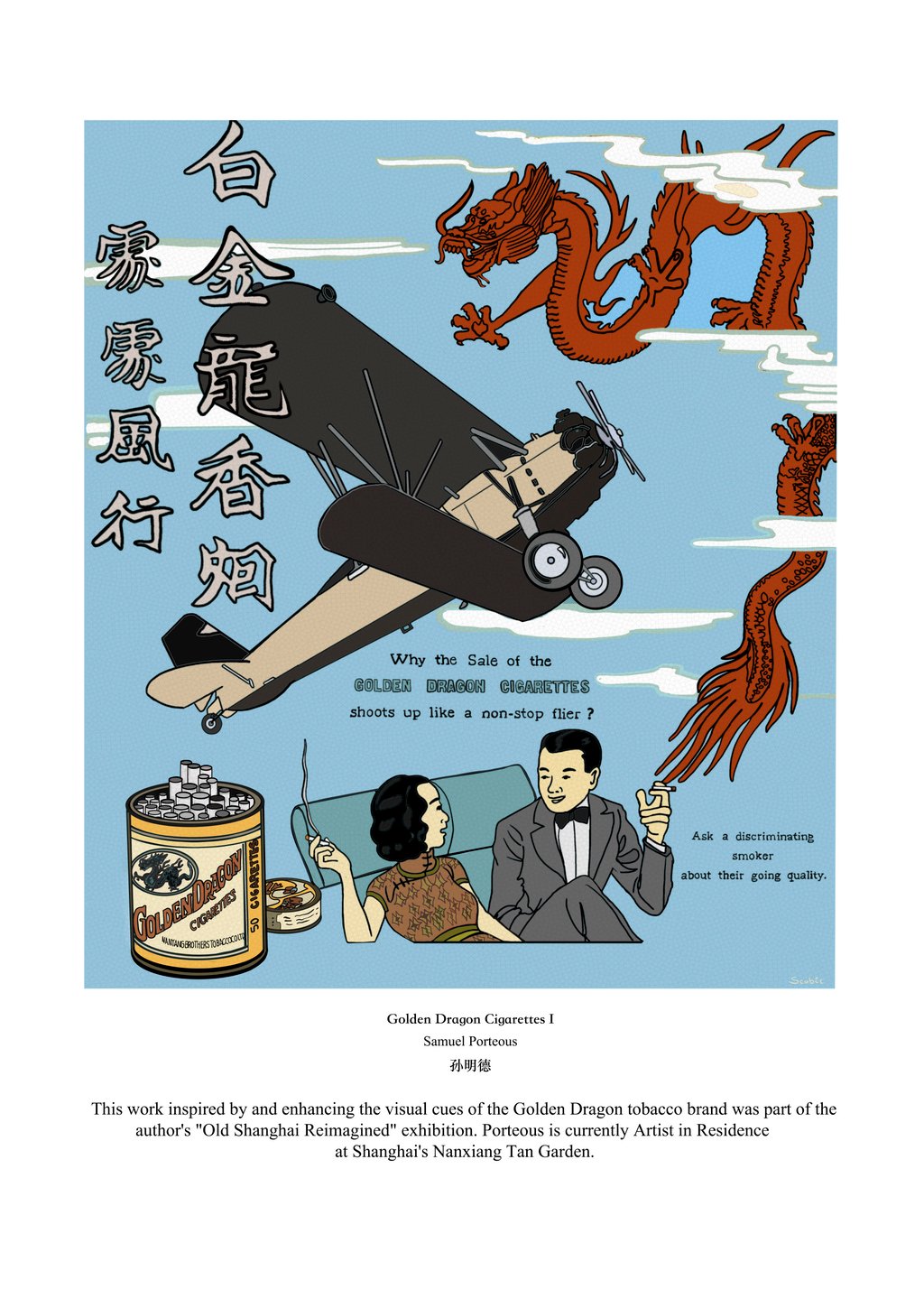The Japanese cigarette brand that was weaponised against Chinese smokers in wartime
- Shanghai-based Canadian artist Samuel Porteous drew inspiration from adverts for three cigarette brands popular in 1930s China, one of which hid a dirty secret

Golden Dragon, Golden Rat, Golden Bat. All cigarette brands popular in 1930s mainland China. All targeted different markets. One facilitated war crimes.
With the slogan “High class people smoke high class cigarettes”, Golden Dragon’s billboard and print advertisements portrayed the sophisticated old-money market and those who aspired to be accepted into its ranks.
This Chinese brand’s ad art was seen throughout Shanghai’s cosmopolitan period between the world wars. A partially obscured Golden Dragon ad even makes a cameo in the Tintin classic The Blue Lotus, set in the same era of geopolitical intrigue.


These calculated visual cues reinforced the desired association between Golden Dragon and all things “modeng” – a Chinese word coined during China’s interwar period and used to describe something fashionably modern, aspirational and attractive.
